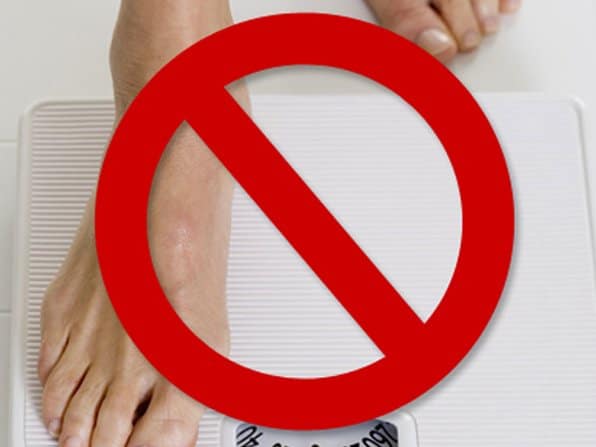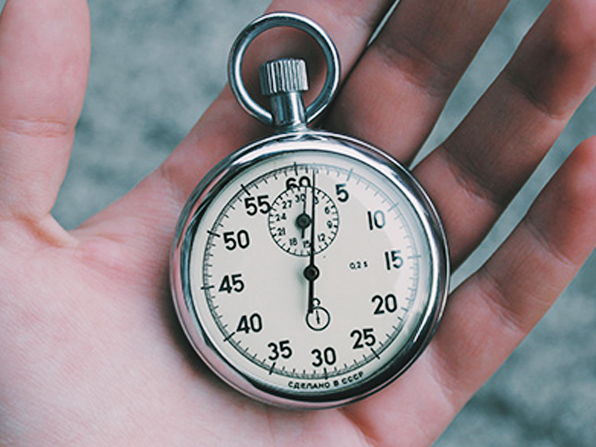
When your goal is weight-loss, progress is everything.
We’ve all got our own way of measuring that progress, and that progress looks different for each of us.
If you’re reading this article, you’re probably already using scales to measure your weight-loss and while they’re the obvious choice, you may well find that they aren’t the most encouraging or the most precise way of measuring progress. Scales can be great for setting goals, but they don’t always give the most accurate of readings.
That’s why it’s important to have a backup plan for when your scale isn’t measuring your true progress. In this article, we’re going to take you through some of our favorite alternate ways of measuring your progress.
1. Tape measurements
When the scales fail you, it’s time to turn to the more visual methods of measuring progress. Many of us strive to lose weight for our own self-esteem and self-empowerment, and much of that is tied into how we look. One of the best ways to check in on your progress without hopping on the scales is to use a traditional tape measurer to quickly check your body fat.
Measuring your body fat is slightly different for men and women. For men, you’ll need to measure the circumference of your waist, hip and your neck – add your waist and hip measurements, and then subtract the neck measurement to determine your circumference value. For example, if your waist is 30, your hips are 36, and your neck is 13, your circumference value would be 53. If you’re a woman, you should record a measurement of the circumference of your neck, waist, and hips. Remember to measure each area at the widest part. You may want to ask a friend or family member to help.
2. Progress photos
There are few more motivational ways to measure your progress than just looking in the mirror in the morning and seeing a trimmer, fitter and slimmer you. Taking a photograph of your reflection each day or at least every week can give you the boost you need to keep pushing yourself forward.
What is important however, is that you photograph your progress properly and as accurately as you can. That means taking pictures at the right angles with the most neutral lighting that you can find, and that means getting photos of your entire body, not just the bits you want to work on. Find a full-length mirror and use that to capture your reflection as adequately and as completely as you can. Use the same outfit every time if possible and try to strike the same pose.
3. Setting goals
Goals are the driving force behind pretty much any fitness regime and they can be an excellent way of measuring just how far you’ve come since you first stepped into the gym, picked up your first weight or went on your first run. We set goals all the time in our everyday lives; now’s the time to set goals to achieve on your weight-loss journey.
The most important thing is picking a goal that is a challenge to you. Don’t look to others when choosing your goals – instead push yourself until you get to a wall you can’t break through. Once you’ve found that wall, write that goal down on a sticky note and put it somewhere that’s highly visible to you every day. That way, every time you walk past the note, you’ll remind yourself of the goal you’ve set yourself – once you’ve beaten that goal, you’ll know that your hard work is paying off.
4. Monitor your heart rate
Monitoring your heart rate is one of the easiest generalized ways to get an understanding of where you stand when it comes to your level of fitness. The heart rate is measured in BPM or beats per minute, and the ideal heart rate level or number is called the THR or your target heart rate. That rate should be between 50% to 70% of what your heart rate is when you’re exercising, if you’re healthy.
Buying a heart rate monitor is the best way of measuring your heart rate. It differs from the other ways of measuring progress on this list because a heart rate monitor can show you if you're pushing your body too hard or not hard enough. Using the target heart rate mentioned above, you can get some idea of where you should be working towards – this method is particularly handy for cardiovascular activities like running, cycling, or rowing.
5. Trying on old (or new) clothes
For many of us, choosing to lose weight is a matter of self-esteem and personal achievement. Some want to burn fat to be able to look like they used to look, while others want to be slimmer than they ever have been. Trying on old clothes or new sizes can be a fun and inspiring way to give you motivation to achieve goals you’ve set for yourself.
A good way of using this method of testing progress is to find an old item of clothing that you absolutely love, or buy a new piece of clothing that you’ve always wanted to fit into, and using that as a benchmark for how slim you want to be. As you progress towards your fitness goals, you can try on the clothes as often as you want and get a very tangible indication of how much weight you really are losing.
We all have our own ways of measuring our progress, and some of the ones we’ve listed here are the most popular ways of doing so without resorting to scales. But none of those progress yardsticks are worth anything if you aren’t hitting the goals you’ve set for yourself.
That’s where a supplement like SKALD can help. Expertly created by leading scientists and nutritionists, SKALD kills your appetite, gives you energy, boosts your mood and speeds up your metabolism. If you are already taking SKALD, remember consistency is key! Don’t let your results slip, it’s harder to regain than to maintain. Make sure to keep your supplies topped off.




